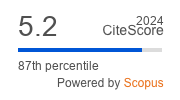Article | Open Access
What Is the Role of the Government in Wildlife Policy? Evolutionary Governance Perspective
| Views: | 3417 | | | Downloads: | 1682 |
Abstract: With the growing populations and range of large wild mammals in Europe, wildlife governance has grown in importance and provoked social conflicts, pressuring policy-makers to provide adequate policy responses. Some countries chose decentralised approaches, while others retain traditional top-down mechanisms. However, evolutionary mechanisms behind those changes and their impact on steering have attracted relatively little attention. We investigated the evolution of the governance of three wildlife species (European bison, moose, and wolf) in Poland (1945–2020) to map their existing paths and explore external and internal factors influencing steering patterns. The results suggest that despite the persistent dominance of state-centred governance and top-down hierarchical instruments characteristic for a post-socialist country, steering involved intense and often informal communication with influential actors. A growing diversity of actors and discourses in wildlife governance increased the state’s steering options and improved conservation outcomes. Concurrently, the government’s steering shifted from concrete policy results to managing tensions and interests within the field. These transformations helped to retain the effectiveness of steering in the changing context, while retaining state-dominated governance.
Keywords: carnivore conservation; environmental policy; institutional change; organisational theory; policy analysis; ungulate management
Supplementary Files:
Published:
© Krzysztof Niedziałkowski, Renata Putkowska-Smoter. This is an open access article distributed under the terms of the Creative Commons Attribution 4.0 license (http://creativecommons.org/licenses/by/4.0), which permits any use, distribution, and reproduction of the work without further permission provided the original author(s) and source are credited.


